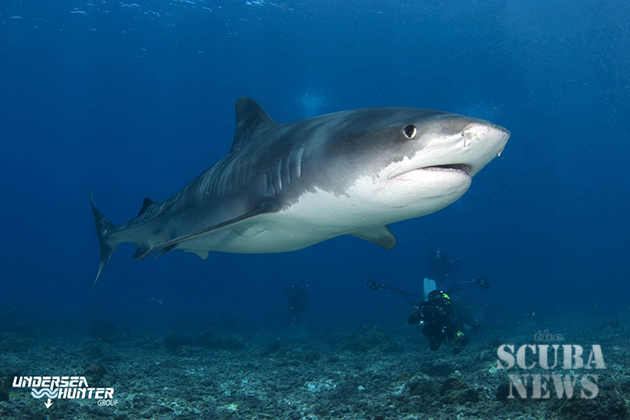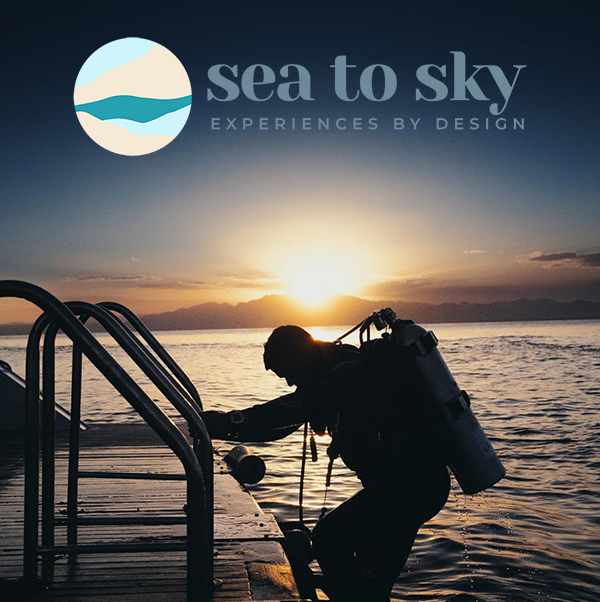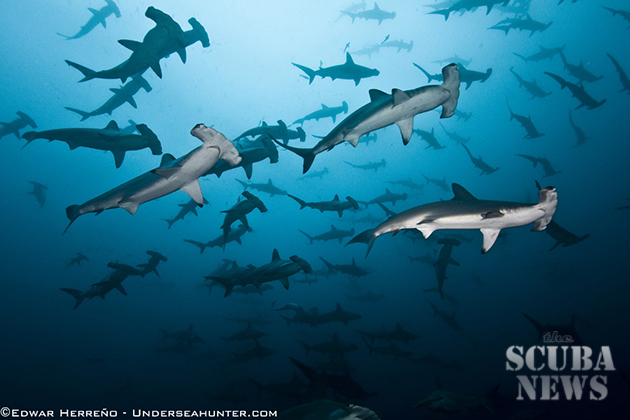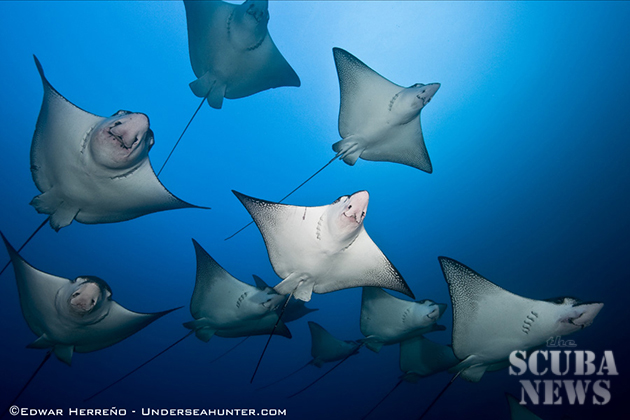In 1994, legendary oceanographer Jacques Cousteau labelled Costa Rica’s Cocos Island as the most beautiful in the world: quite an accolade coming from a man who travelled to some of the planet’s most spectacular places during his lifetime. Located 340 miles off Costa Rica’s western shore, Cocos is certainly a breathtaking sight; a prehistoric landmass of jutting mountain peaks and lush rainforest emerging from the vast expanse of the Pacific Ocean. It has many unique features, including cloud forests that are found nowhere else in the region and which are home to a host of rare and endemic species. However, for all the beauty of the island’s verdant landscape and many, tumbling waterfalls, Cocos’ real magic lies not on land but beneath the waves that lap upon its shores. Sheer walls, strong currents, soaring pinnacles and an abundance of nutrient-rich upwellings combine to make the waters around Cocos some of the most diverse on the planet. Over the years, the dynamic nature of the island’s diving as well as the thrilling number of marine species found there have deservedly earned Cocos a reputation as a once-in-a-lifetime dive destination- and made it the undisputed highlight of scuba diving in Costa Rica.
The island’s underwater topography is a wonderland of caves, tunnels, channels and impressive pinnacles; all of which are home to over 300 species of fish, 27 of which are found nowhere else in the world. When diving Cocos, the possibilities for rare and unusual sightings are endless- from passing pelagics like yellowfin tuna and sailfish, to the many shark species for which the island is so famous. Of these, the most iconic of the island’s inhabitants are the scalloped hammerheads, which aggregate in their hundreds around Cocos’ underwater sea mounts. This is one of the few places in the world where divers can observe this extraordinary species in such numbers, and the sight is both incredibly beautiful and utterly unforgettable.
The hammerheads are by no means the only sharks to be found on Cocos’ dive sites, however- the area is also home to silvertips, tigers, blacktips, Galapagos sharks and marauding gangs of hungry whitetip reef sharks. It really is a pelagic paradise, where giant shoals of trevally and other large gamefish are commonly sighted, and where cruising mantas and whale sharks often appear to feast on the nutrient upwellings that are the key to the island’s incredible biodiversity. Because Cocos Island is located so far from land and surrounded by deep water, passing whales and dolphins are also frequently spotted; thereby completing the checklist of incredible encounters made possible by a visit to this exceptional place.
Of course, Cocos’ charm and unspoiled magic is due in large part to its remoteness. The journey to the island takes 36 hours by boat from Puntarenas on the Costa Rican mainland, and the diving there can only be done via a specific Cocos liveaboard. It is recommended that divers planning to visit the island have at least 25 hours of experience underwater due to the unpredictable currents and the depth of some of Cocos’ dive sites. Depth is a defining characteristic of Cocos diving, and in a place where the majority of dive sites are deeper than 60 feet it is imperative that divers have a minimum certification of Open Water (or equivalent), with specialties in Night and Deep diving. Strong currents aside, the conditions at Cocos Island are typically good, with visibility ranging between 60- 100 feet and water temperatures hovering between 73- 84°F. It is possible to dive at Cocos throughout the year, with divers having to choose between better visibility and calmer seas in the dry season (December to May), and reduced visibility but better sightings of mantas and whale sharks during the rainy season due to seasonal nutrient blooms. Whenever you choose to go to Cocos Island, one thing is for certain- this is a destination that still deserves its Cousteau stamp of approval, and which for once, absolutely lives up to the hype.








